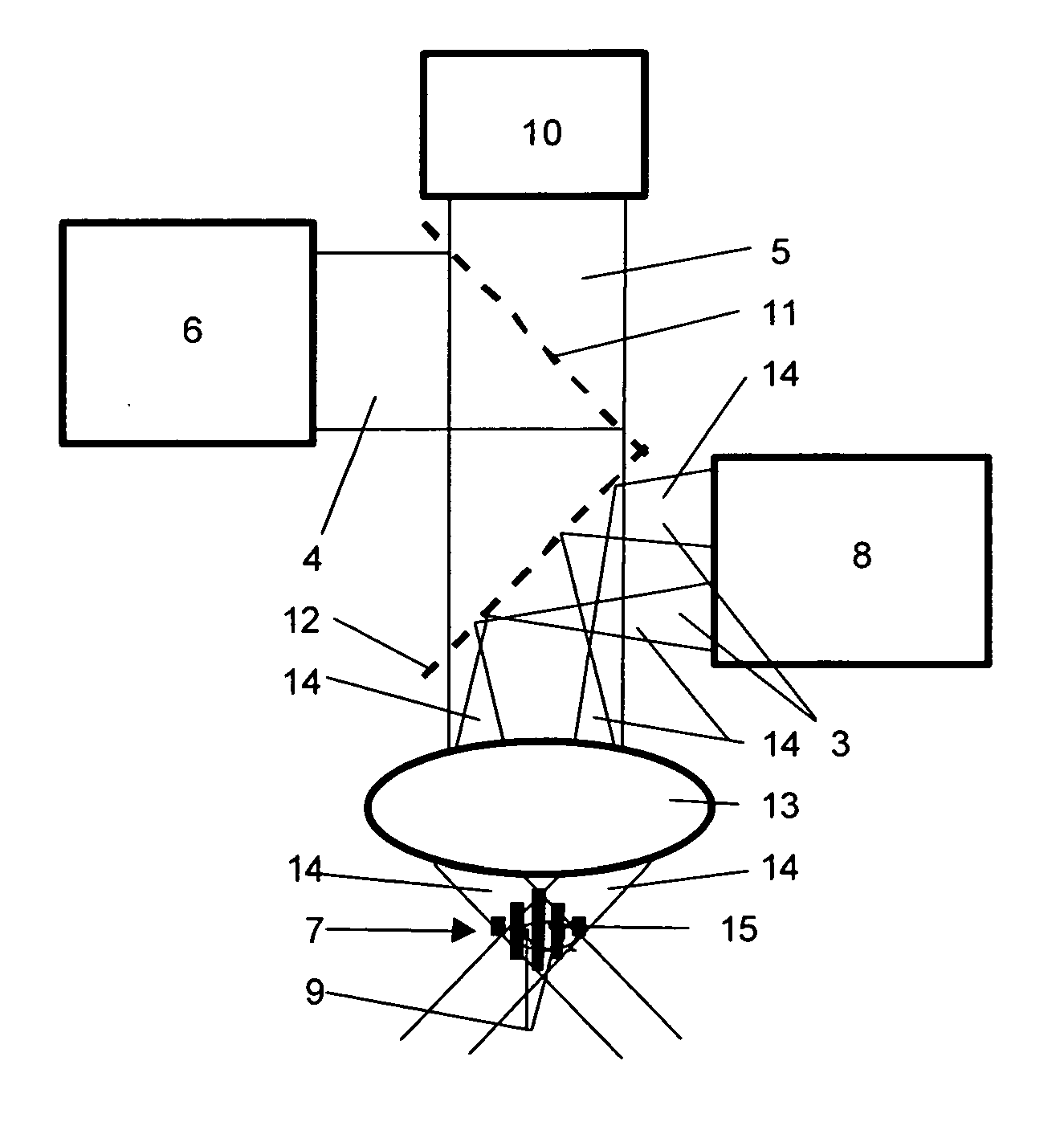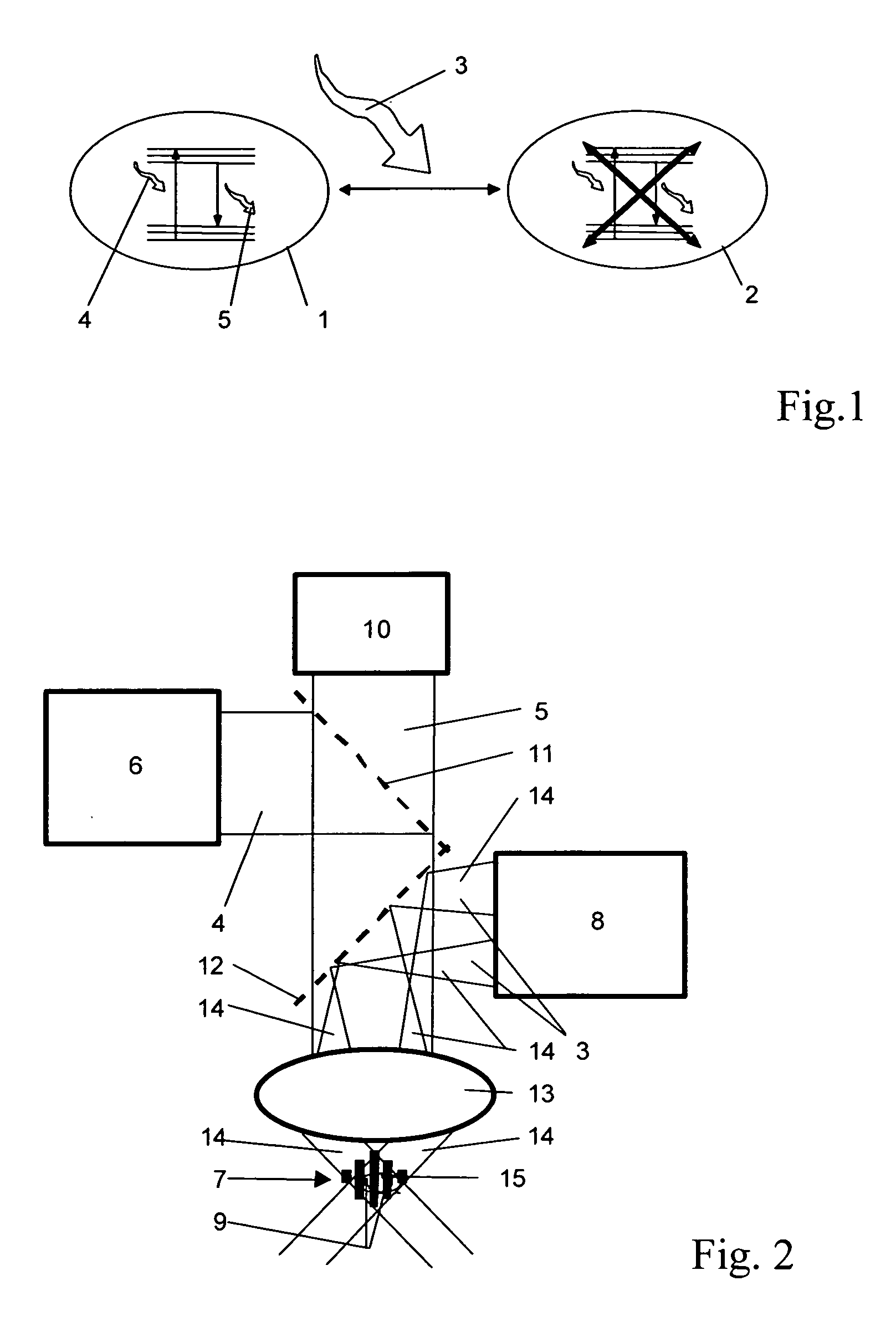High spatial resolution imaging
a high spatial resolution and imaging technology, applied in the field of high spatial resolution measuring a sample, can solve the problem of high cost of application of the known method, and achieve the effect of high spatial resolution
- Summary
- Abstract
- Description
- Claims
- Application Information
AI Technical Summary
Benefits of technology
Problems solved by technology
Method used
Image
Examples
Embodiment Construction
[0020] Using substances having two states with different optical properties is a central aspect of the invention. Further, it is important that the substance may be purposefully switched with a switch over signal out of the first into the second state. This process is reversible. I.e. the substance can also be returned to the first state. The optical properties of the substance in the first state differ from those in the second state in that only the optical properties of the first state support the measurement signal. However, it is not necessary that the relevant optical properties are “binary”, i.e. it is not necessary that they are present in the one state at 100% and in the other state at 0%. Instead, it is sufficient, if the relevant optical properties are different to such an extent that the measurement signal my at least mainly be regarded as associated with the first state.
[0021] In contrast to the state of the art in the field of fluorescence microscopy the invention make...
PUM
 Login to View More
Login to View More Abstract
Description
Claims
Application Information
 Login to View More
Login to View More - R&D
- Intellectual Property
- Life Sciences
- Materials
- Tech Scout
- Unparalleled Data Quality
- Higher Quality Content
- 60% Fewer Hallucinations
Browse by: Latest US Patents, China's latest patents, Technical Efficacy Thesaurus, Application Domain, Technology Topic, Popular Technical Reports.
© 2025 PatSnap. All rights reserved.Legal|Privacy policy|Modern Slavery Act Transparency Statement|Sitemap|About US| Contact US: help@patsnap.com


